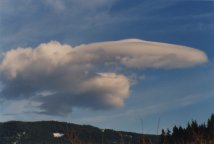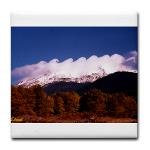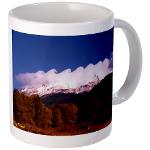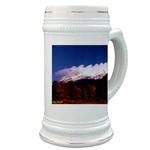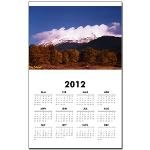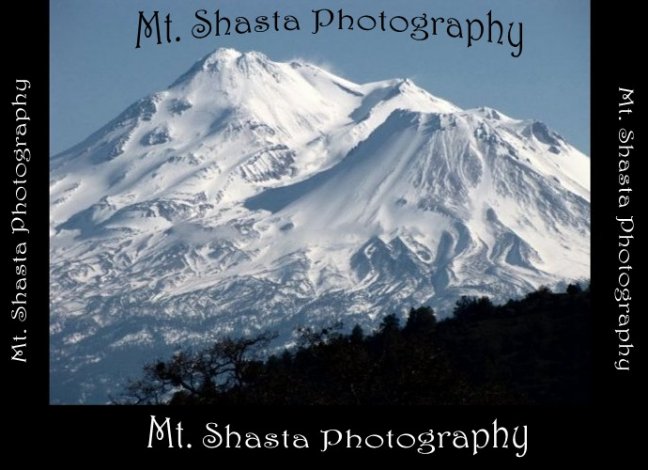
Take a virtual tour around Mt. Shasta
Billow Clouds/Kelvin-Helmholst Principle/Waves
Gallery of Mt. Shasta Pictures
Eruptive History
Mount Shasta in northern California, is a massive composite volcano consisting of overlapping cones centered at four main vents. The volcano was constructed during the last several hundred thousand years (Christiansen and Miller, 1976; Miller, 1980; Christiansen, 1985). Each of the cone-building periods produced andesite lava flows and pyroclastic flows, mainly at the central vents, as well as numerous lahars on and beyond the flanks of the volcano. Construction of each cone was followed by eruption of domes and pyroclastic flows of more silicic composition at central vents, and of domes, cinder cones, and lava flows at vents on the flanks of the cones.
Two of the main eruptive centers at Mount Shasta, the Shastina and Hotlum (summit of Mount Shasta) cones, were formed during the last 10,000 yr (Miller, 1980). Holocene eruptions also occurred at Black Butte, a composite dacite dome about 13 km west of Mount Shasta (Miller, 1978). Geologically recent eruptions at these two main centers and at flank vents form the principal basis for assessing the most likely kinds of future eruptive activity and associated potential hazards.
Streams that head on Mount Shasta drain into the Shasta River to the northwest, the Sacramento River to the west and southwest, and the McCloud River to the east, southeast, and south. The lower flanks of Mount Shasta consist mostly of broad, smooth coalescent fans formed by pyroclastic flows, lahars, and streams that descended the volcano along canyons and then spread out. As a result, pyroclastic flows and lahars at Mount Shasta have traveled a shorter distance from the volcano than they would have if they had been confined to narrow valleys. Their paths, on the fans, however, are less predictable.
Mount Shasta has erupted on the average at least once per 800 yr during the past 10,000 yr, about once per 300 yr during the past 3,500 yr, and about once per 250 yr during the past 750 yr (Miller, 1980; Crandell and others, 1984). The last known eruption occurred about 200 radiocarbon years ago (Miller, 1980) and may have occurred in 1786 A.D. (Finch, 1930).
Eruptions during the last 10,000 yr produced lava flows and domes on and around the flanks of Mount Shasta. Lava flows issued from vents near the summit and from flank vents as far as 9 km away, and individual flows are as long as 13 km. Only about 33 percent of past lava flows reached more than 10 km from the summit and none reached as far as 20 km.
Some pyroclastic flows originating at the summit vent and at the Shastina vent extended more than 20 km (Miller, 1978; Miller, 1980). Pyroclastic flows from the Black Butte vent extended about 10 km southwestward.
No known debris avalanches have occurred at Mount Shasta during Holocene time, but a catastrophic debris avalanche occurred at there between about 300,000 and 360,000 yr ago (Crandell and others, 1984; Ui and Glicken, 1986). According to D. R. Crandell (personal commun., 1986), the Shasta debris avalanche flowed more than 64 km through the Shasta valley, covers more than 675 km2, and has a volume that exceeds 45 km3.
Volcanic-Hazards Assessment
Future eruptions like those of the last 10,000 yr will probably produce deposits of lithic ash, lava flows, domes, and pyroclastic flows, and could endanger works of man that lie within several tens of kilometers of the volcano.
Lava flows and pyroclastic flows may affect low areas within about 15-20 km of the summit of Mount Shasta or any satellite vent that might become active. Lahars could affect valley floors and other low areas as much as several tens of kilometers from Mount Shasta.
Owing to great relief and steep slopes, a portion of the volcano could also fail catastrophically and generate a very large debris avalanche and lahar. Such events could affect any sector around the volcano and could reach more than 50 km from the summit. Explosive lateral blasts could also occur as a result of renewed eruptive activity, or they could be associated with a large debris avalanche; such events could affect broad sectors to a distance of more than 30 km from the volcano.
On the basis of its Holocene behavior, the probability is low that Mount Shasta will erupt large volumes of pumiceous ash in the future. The distribution of Holocene tephra and prevailing wind directions suggest that areas most likely to be affected by tephra are mainly east and within about 50 km of the summit of the volcano. However, the andesitic and dacitic composition of its products suggests that Mount Shasta could erupt considerably larger volumes of tephra in the future. Moreover, Christiansen (1982) has suggested that because it is a long-lived volcanic center and has erupted only relatively small volumes of magma for several thousand years, Mount Shasta is the most likely Cascade Range volcano to produce an explosive eruption of very large volume (101 -102) km3. Such an event could produce tephra deposits as extensive and as thick as the Mazama ash and pyroclastic flows that could reach more than 50 km from the vent. The annual probability for such a large event may be no greater than 10^-5, but it is finite.
NEWS
June 29, 2021
Lava Fire Rages on Mount Shasta in Weed, Calif. After Lightning Strikes
June 13, 2017
Current Conditions at Mount Shasta and the McCloud River
Sept. 16, 2014
Breaking News: Boles Fire forces evacuations in Weed
Wildfire burns homes, 2 churches in Weed, Calif.
Sept. 21, 2014
UPDATE: Flash Flood Watch After Glacier Breaks Off Mt. Shasta
Glacier breaks off Mt. Shasta Volcano in North California - Lahar mud flow
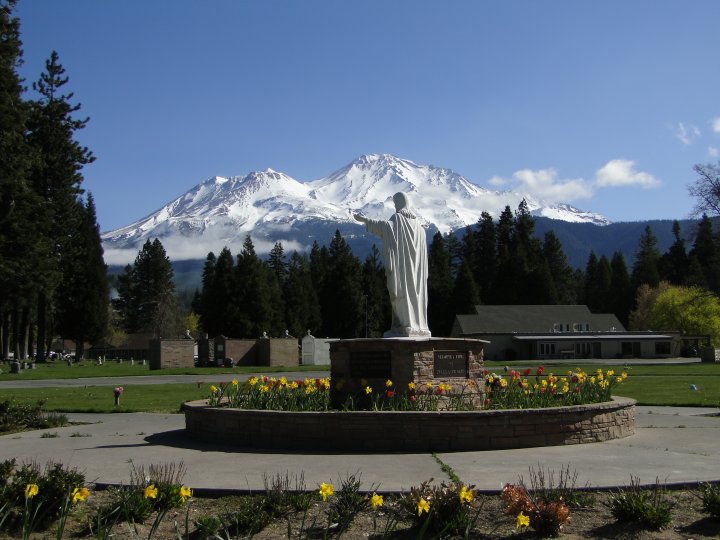
In memory of Susan Ekwall 10/19/1944-3/19/13
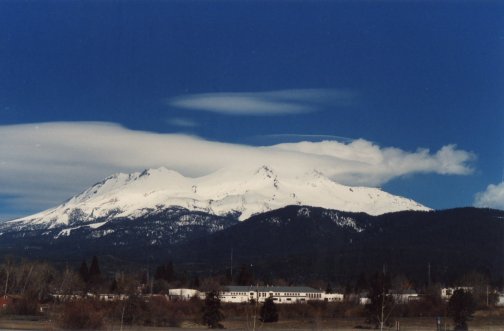
Mt. Shasta City in front of Mt. Shasta
